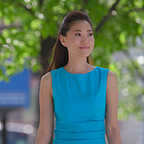‘Pachinko’ book versus TV series
TV adaptation is not the same as award-winning novel
*Some spoilers of TV show*
I loved reading the book PACHINKO by Min Jin Lee. It’s a gripping story from start to finish about a Korean family through multiple generations, with the setting being in a colonized Korea and later in Japan.
Now halfway through the eight-episode series (season one) of the TV adaptation of ‘Pachinko’ on Apple TV+, I can’t say that I am loving the way the story is unfolding on-screen.
Yes, I am probably biased because I read the book before watching the series.
First off, the episodes are so beautifully shot and directed. The lighting, with a lot of creative use of natural light, and the earthy bold tones of the shots are definitely pleasing to the eye — so many scenes of the show (that was shot in Korea and in Vancouver) look like its own work of art. Kudos to directors Kogonada and Justin Chon.
The writing is also exceptional, and relevant to the times. I give credit to showrunner and writer Soo Hugh for her creative liberties in turning a massive novel into a TV series. I can only imagine the careful thought and consideration that went into making this multi-lingual, historical drama.
I understand the English and Korean speaking perfectly — where the writing (including the Korean dialect) seems flawless. I can only assume it’s the same in Japanese.
It’s also fascinating to see different sets of subtitles, color-coded to properly identify a language. Yellow subtitles mean they’re speaking in Korean. Blue subtitles mean they’re speaking in Japanese. Sometimes the subtitles are both blue and yellow — meaning, the character is using both languages in a sentence. I’ve never seen this be done on a TV show or movie!
As a producer myself (mostly in news features), I don’t know how I would’ve tackled this project. The TV show creatively flips back and forth through timelines, with the main story being carried by the grandson, Solomon, of the main character, Sunja.
In the novel, Solomon does not appear in the story until later in the book — which unfolds chronologically from Sunja’s childhood to her at old age — so it’s interesting to see how the TV show is centered on Solomon from episode one. The TV show creators also added a few extra storylines or expanded a character’s story.
I don’t have an issue with this per se, but I’m sad I can’t connect to the characters on-screen as well as I did while reading the book. (The actors, though, are phenomenal). The characters come off as too simple in the TV version — whereas they are portrayed to be a lot more complex in the book.
For instance, Koh Hansu, the attractive well-off businessman who is respected by both the Koreans and Japanese, comes off as more mysterious when he’s introduced in the novel. It’s a constant guessing game, for at least the first half of the book, to see if he’s actually evil or not. The reader toils with questions on whether he is acting out of true love for Sunja or not. And does love justify his actions?
In the TV show, Hansu is almost immediately a villain. Besides his good looks, he is not likeable at all, and it’s almost shocking that Sunja would fall for this man even though she has seen his abrasive behaviors (at least in the TV version) and heard negative rumors about him.
It’s also interesting to see Pastor Isak (who comes off ‘too Christian’ in the TV show) and Koh Hansu interact and clash in the TV episodes. In the novel, they don’t even cross paths. I guess creating a clear love triangle (with Hansu, Isak and Sunja) is more thrilling to watch on television.
In the episodes, the story goes from being set in Korea to Japan — to Japanese-speaking to Korean-speaking. It’s easy for me to follow, as someone who is familiar with Korea’s history and fluent in Korean, but I wonder if the shows are as easy to follow for someone who is less familiar with the history or the language.
There are still four more episodes to watch in this season — and I’ll be watching the rest! I really do hope AppleTV+ signs off on the three more seasons planned for this show — I can’t imagine a storyline, which spans from 1910–1989, to be told in just one season!
All in all, I love the fact there’s a high-quality TV drama on a major streaming service that tells a part of Korean history that is lesser known. Korea was annexed by Japan in 1910, and during the Japanese occupation until 1945 Koreans had to abandon their language and culture — schools only taught Japanese and Koreans adopted Japanese names.
And even if you couldn’t care less about Korean history or understand the Asian languages, the TV series contains universal themes of sacrifice and family.
“…I mean this sincerely, I hope it doesn’t sound glib, I hope that the show will help people realize what their family means and what their parents and grandparents did for them. I hope it’s the most honest phone commercial we ever make. Call home.” -Soo Hugh, Executive Producer of ‘Pachinko’ on AppleTV+, via Forbes
To be clear, Pachinko on AppleTV+ is a good show and nicely done. I just liked the book so much better.
